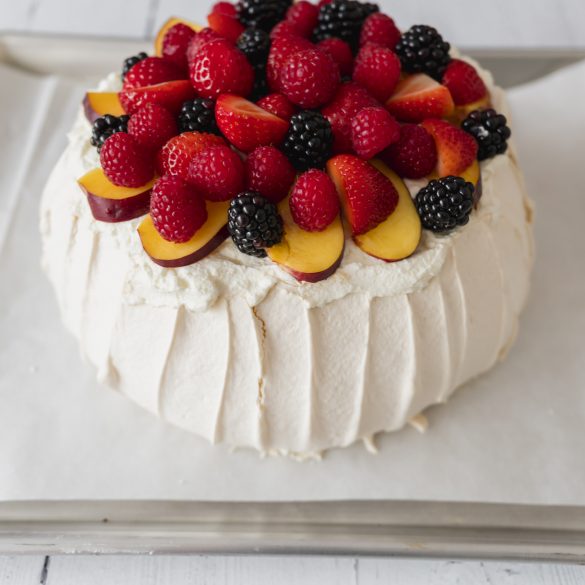Pavlova is a dessert that requires only 5 ingredients, which you probably have in your kitchen anyway. The main ingredients are beaten egg white and superfine sugar. Pavlova is light and crisp on the outside with an airy marshmallow texture on the inside. In Australia and New Zealand it is a very popular dessert and is traditionally served with whipped cream and fruit. The ultimate summer treat.
Making pavlova is actually not difficult. Key for success is patience and attention. It takes a while until the sugar completely dissolves in the beaten egg white and turns into a shiny and sugar granule free meringue. Do not rush this process. Last but not least – bake your pavlova slowly at low heat.
Tools & Equipment
- Egg separator
- Large baking sheet
- Offset spatula
- Parchment paper
- Silicone spatula
- Stand mixer fitted with the whisk attachment
Recipe Tips
Make Ahead: you can store your pavlova covered at room temperature for up to 2 days once it has cooled completely. Do not garnish your pavlova in advance, but just before serving.
Sugar: for this recipe you need superfine sugar, as it dissolves much better into egg white. In case you do not have caster sugar at hand, use regular granulated sugar and place it in a food processor. Pulse several times to get superfine sugar.
Egg Whites: use room temperature eggs, because these egg whites beat faster and in a larger volume than cold egg whites. Remove the eggs from the fridge in time to make sure they are at room temperature when you start with this recipe.
Cream of Tartar: if you do not have cream of tartar available, you can easily swap this for 15g of white vinegar or lemon juice.
Directions – How to Make Pavlova
Preheat the oven to 150°C / 300°F. Draw a circle with a diameter of 20 cm / 8-inch on a parchment paper. Line a large baking sheet with the parchment (with the drawn circle on the underside) and set aside.


In the bowl of a stand mixer fitted with the whisk attachment, beat the egg whites on medium-low speed until soft peaks form, for about 5 minutes.

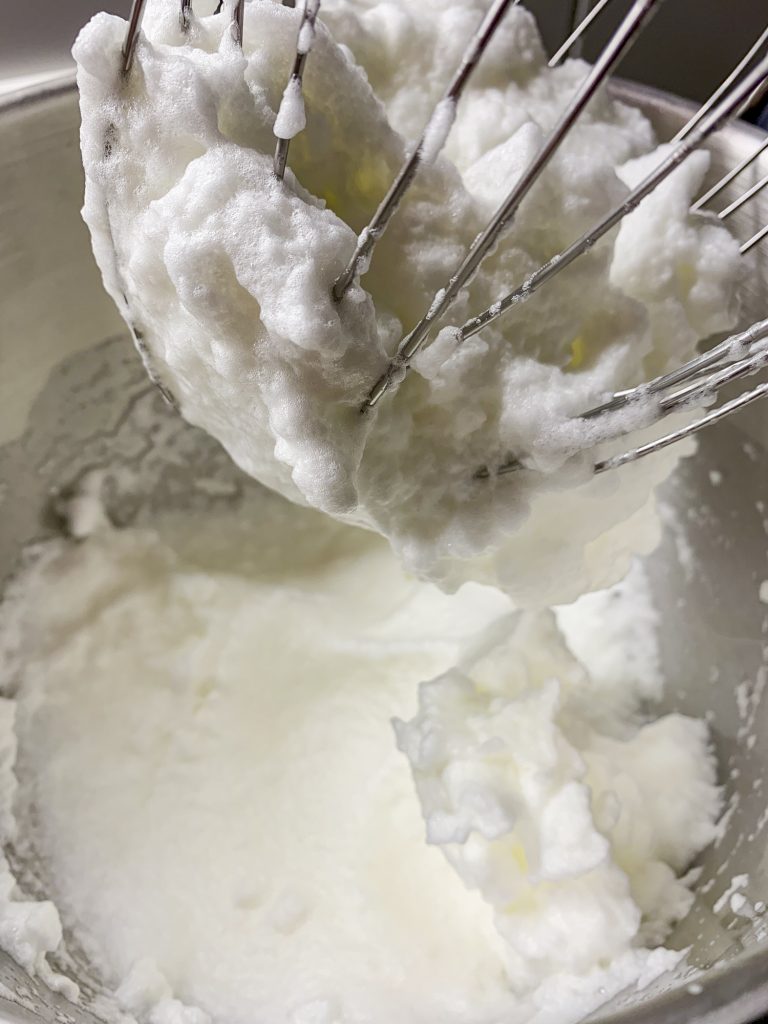
Reduce the speed of the mixer to low and add the sugar in 30-second intervals, add 1-2 tablespoons at a time. Scrape down the sides of the bowl from time to time. This may take about 8-10 minutes. Increase to medium-high and beat the egg whites until glossy, stiff peaks form, for about 2 more minutes. When you hold the whisk upright and the peaks do not move, then you’re done.
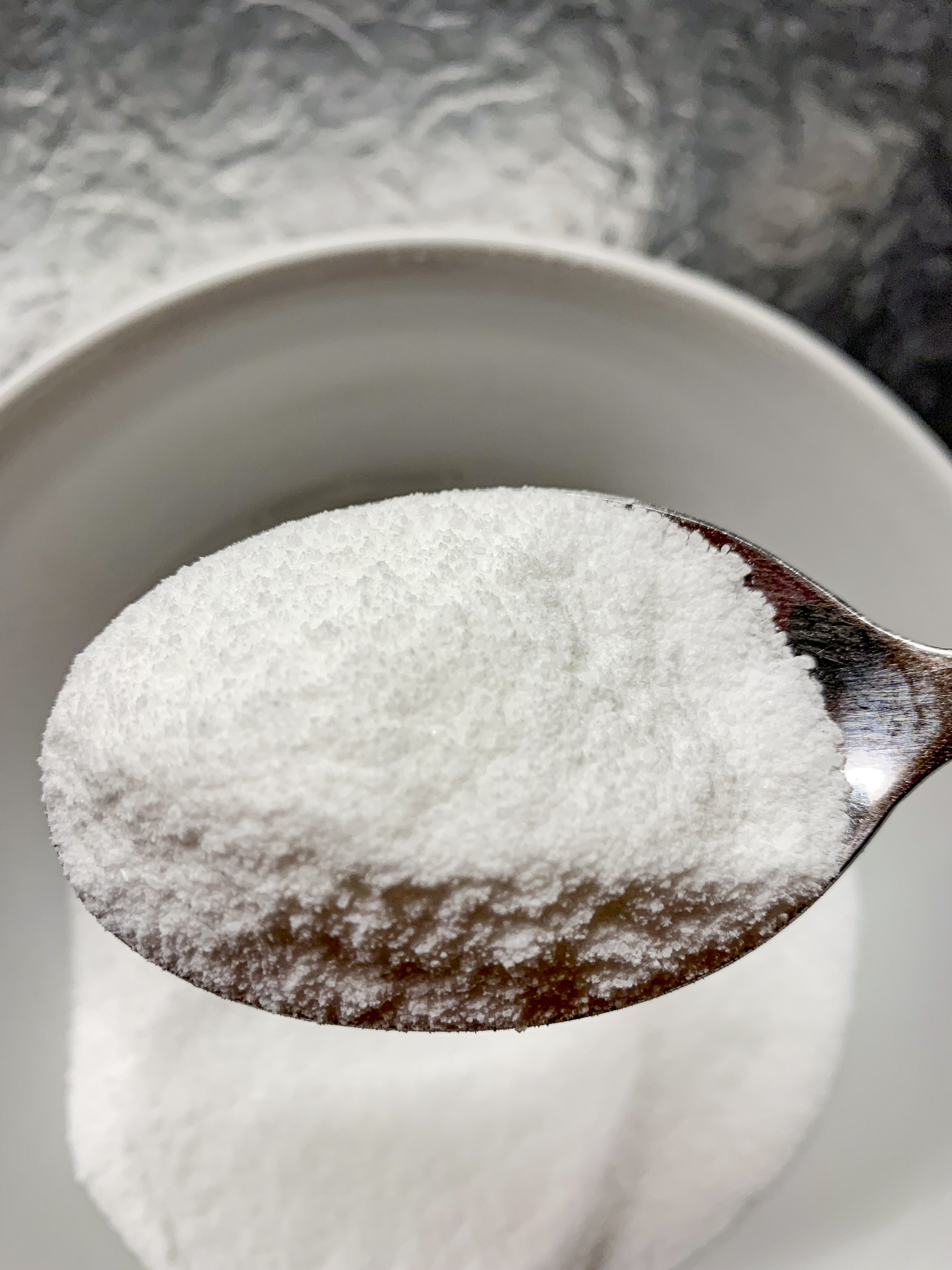
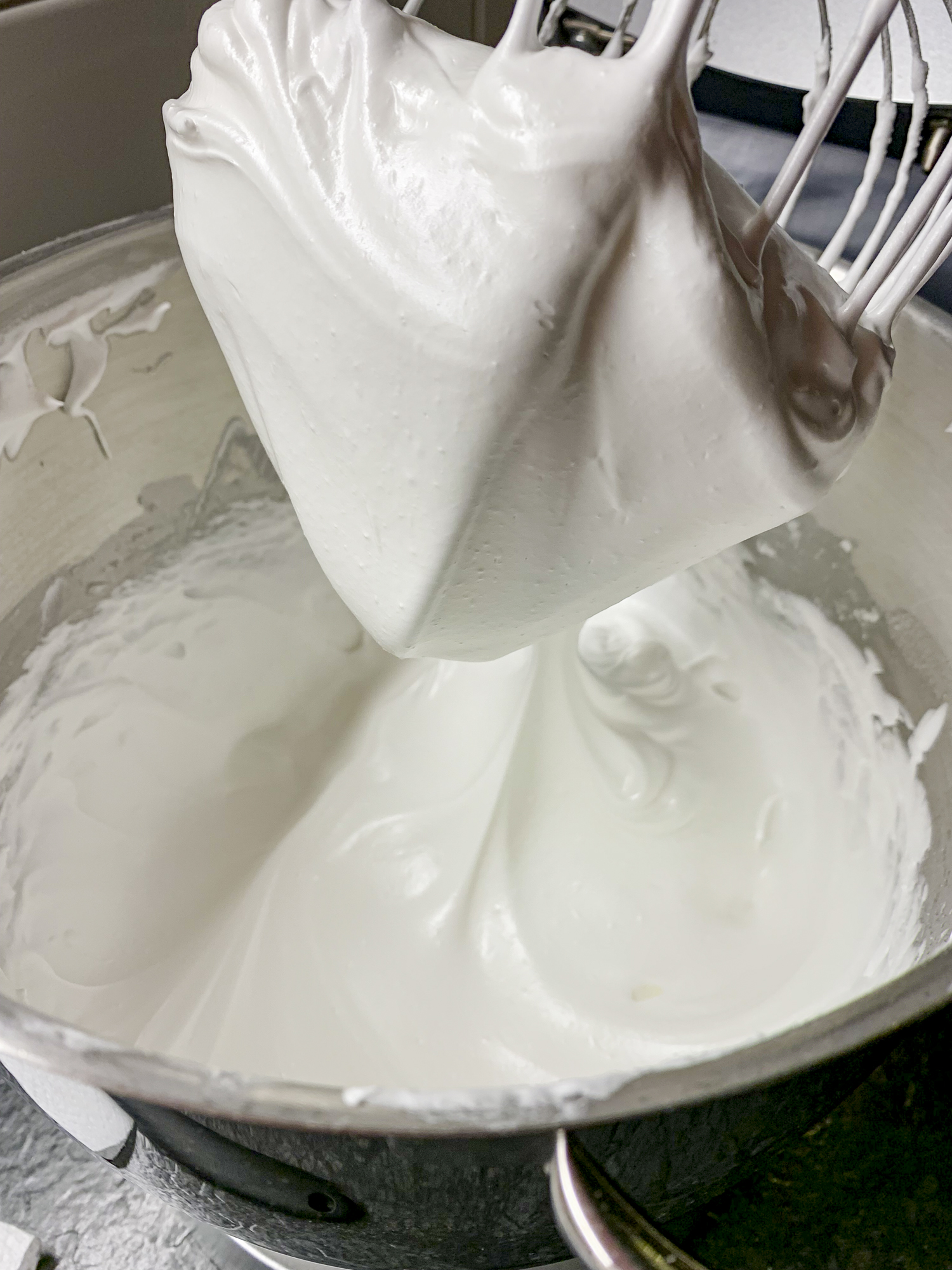
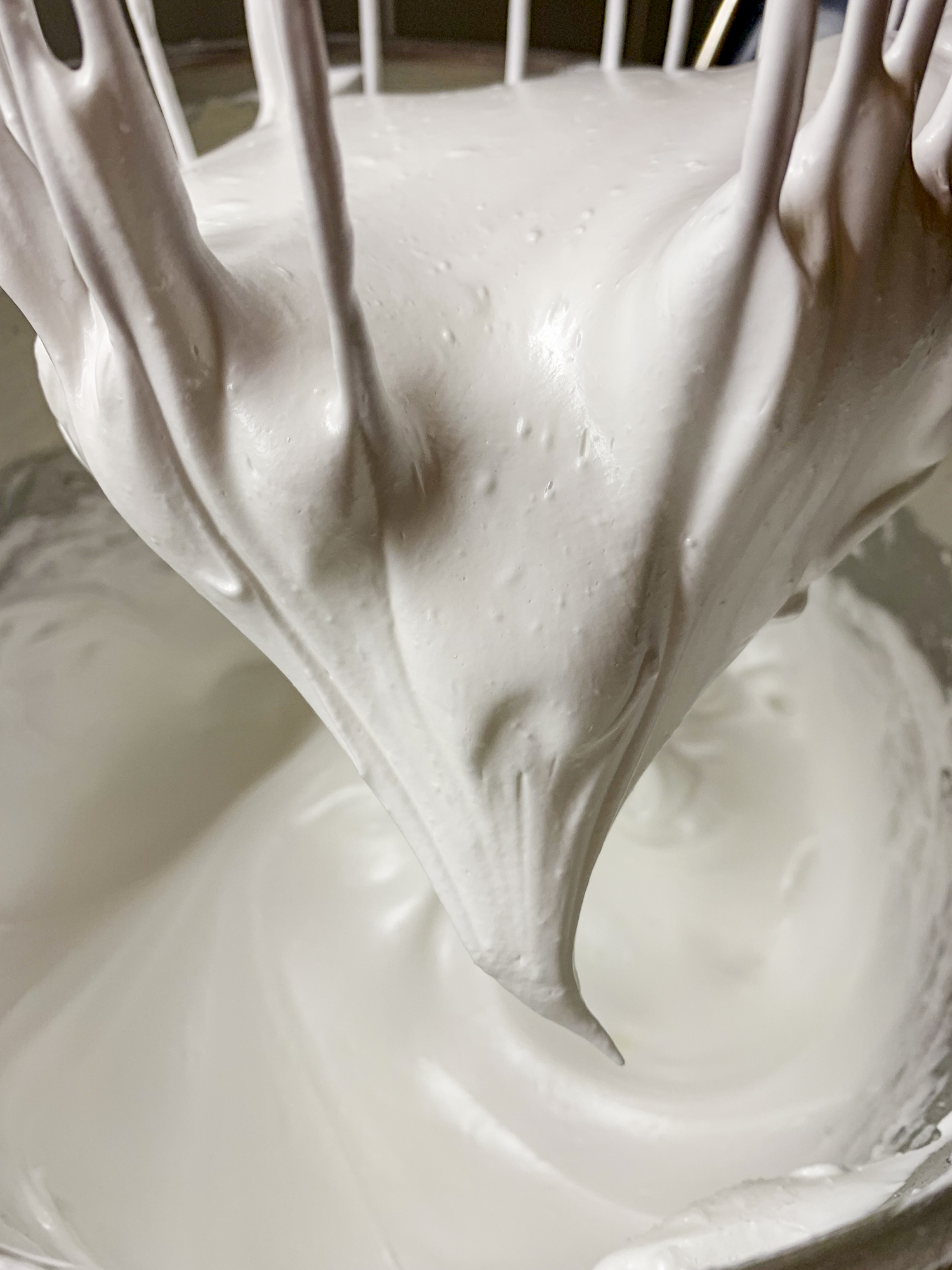
Add the vanilla and beat for 1 more minute. The peaks should still be very stiff. If not, continue beating on medium-high speed. Fold in the cream of tartar and cornstarch.


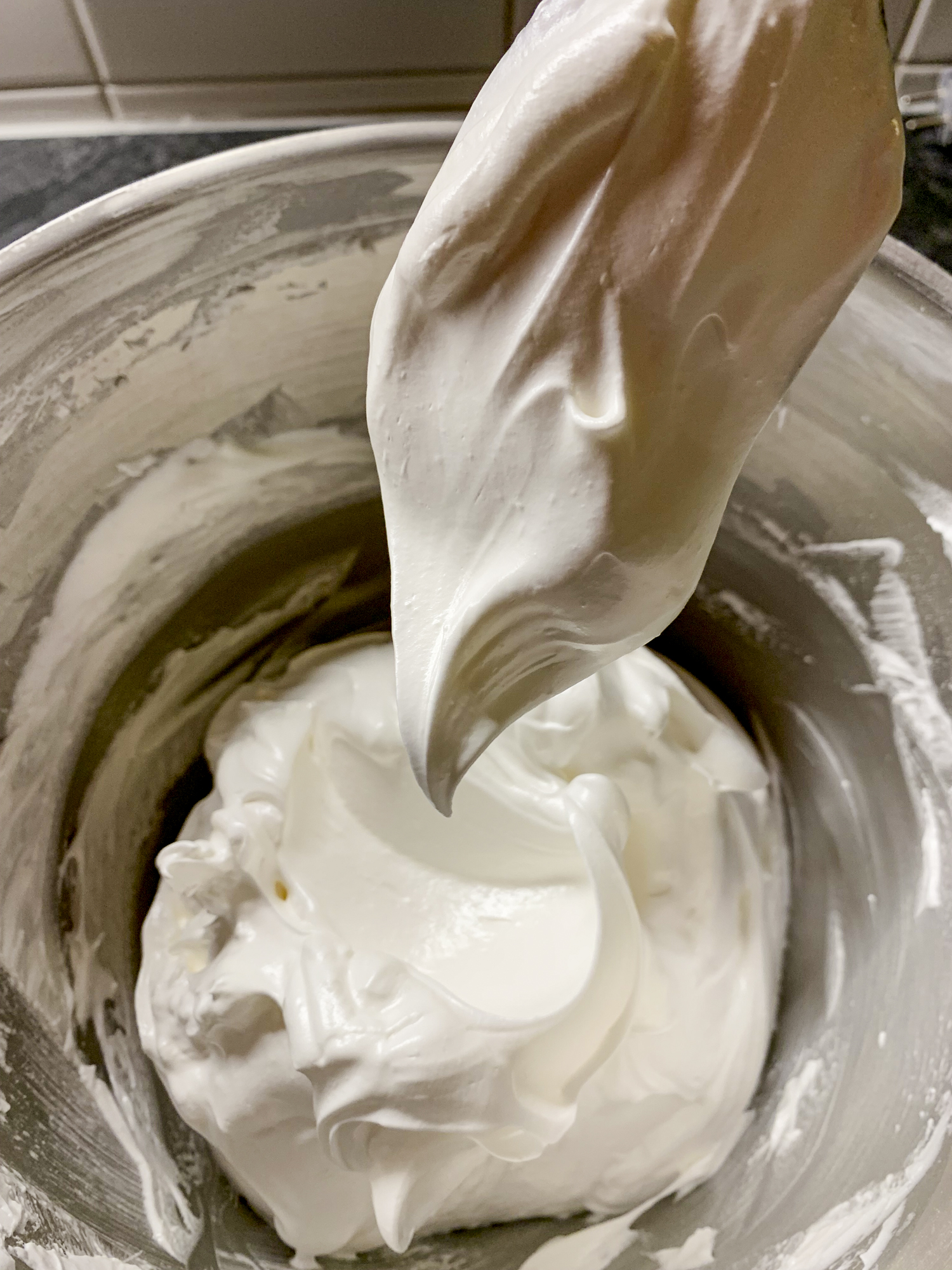
Spread the mixture in your circle on the parchment. Once you have shaped the pavlova make furrows along the sides of the pavlova from bottom to top. Make sure that the edges are high and that there is a nice depression in the center.
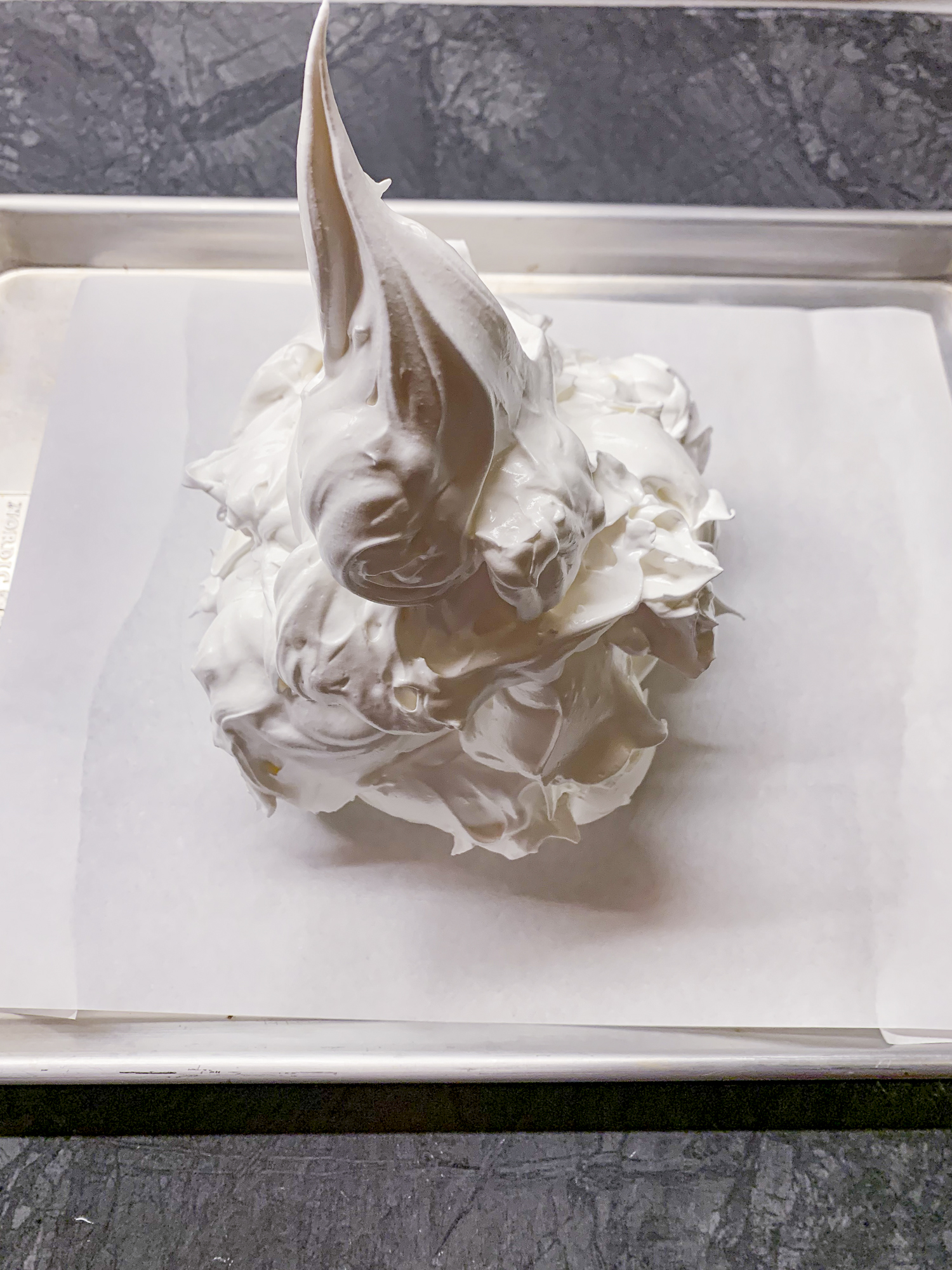
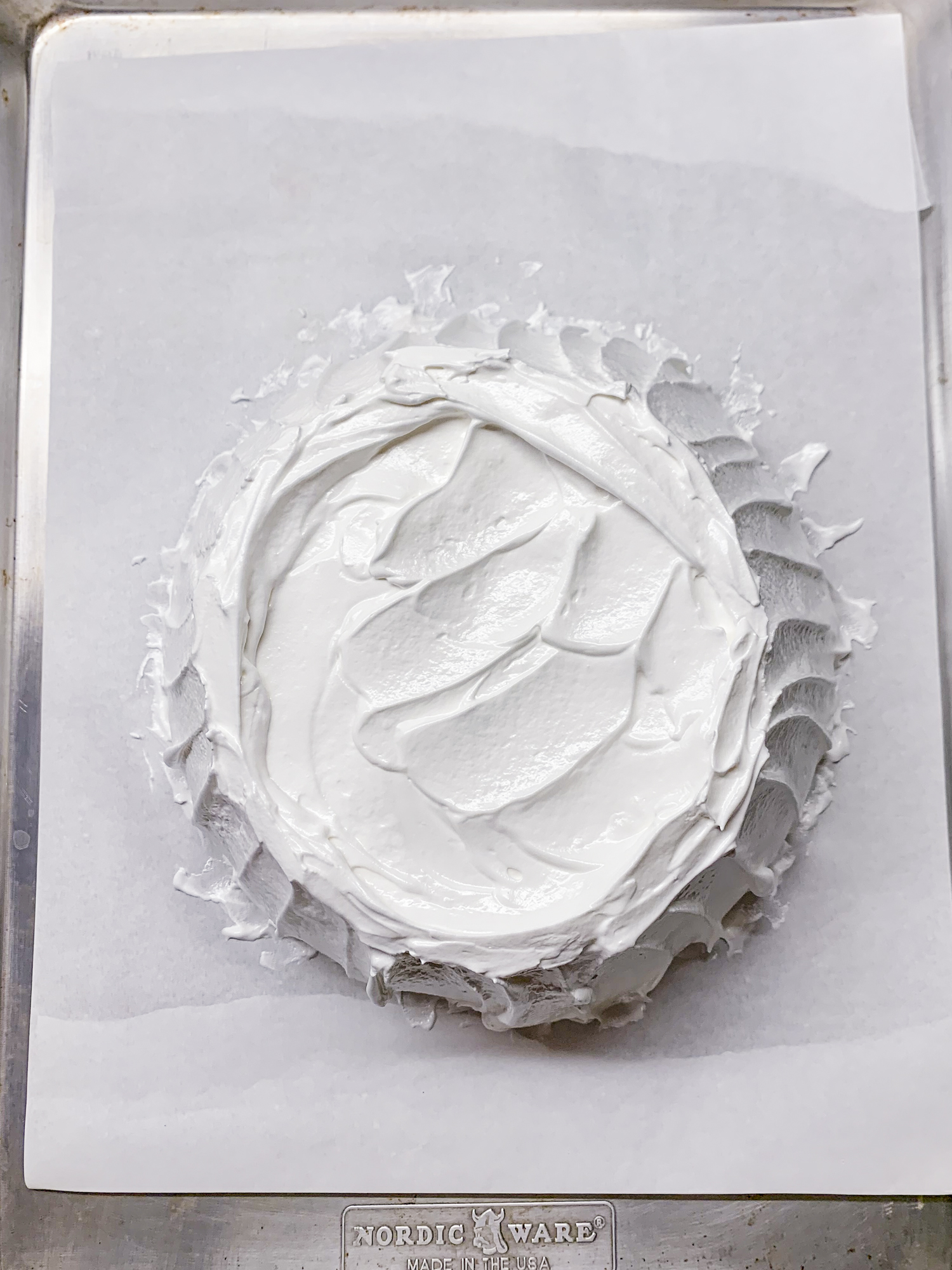

Place the pavlova in the oven. When you close the oven door, reduce the heat to 110°C / 225°F. Bake until the pavlova is firm and dry, for about 90 minutes. If you notice that some spots are browning, rotate the baking sheet. Do not open the oven too much. Turn off the oven and let the pavlova cool down in the oven for at least 1 hour or overnight.
TIP: do not open the oven door after baking! Allowing the pavlova to cool in the oven will prevent any cracking by limiting any temperature changes.
Unfortunately I opened the door too soon, which caused the top to collapse a bit. That’s not too bad, because you can’t see it with the cream and fruit on top, but still a bit annoying if you can avoid it.
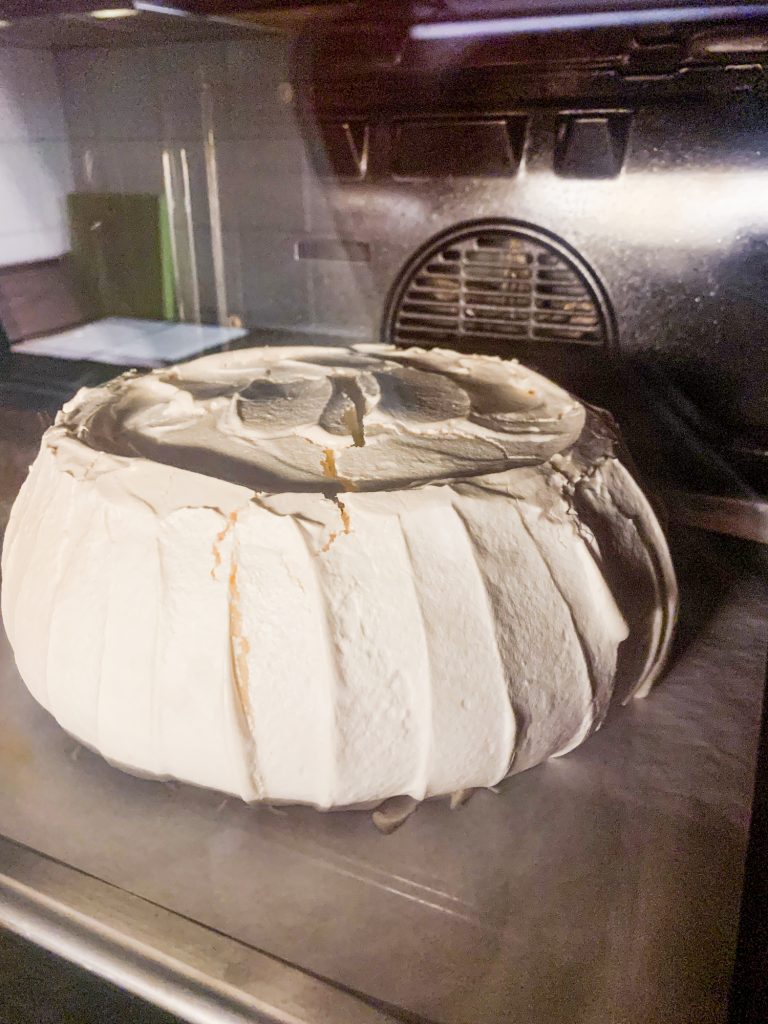

Prepare the Topping: add heavy cream and sugar into the bowl of a stand mixer fitted with the whisk attachment and beat on medium speed until medium peaks form, for about 3-4 minutes. Slice the peach and halve the strawberries if desired.
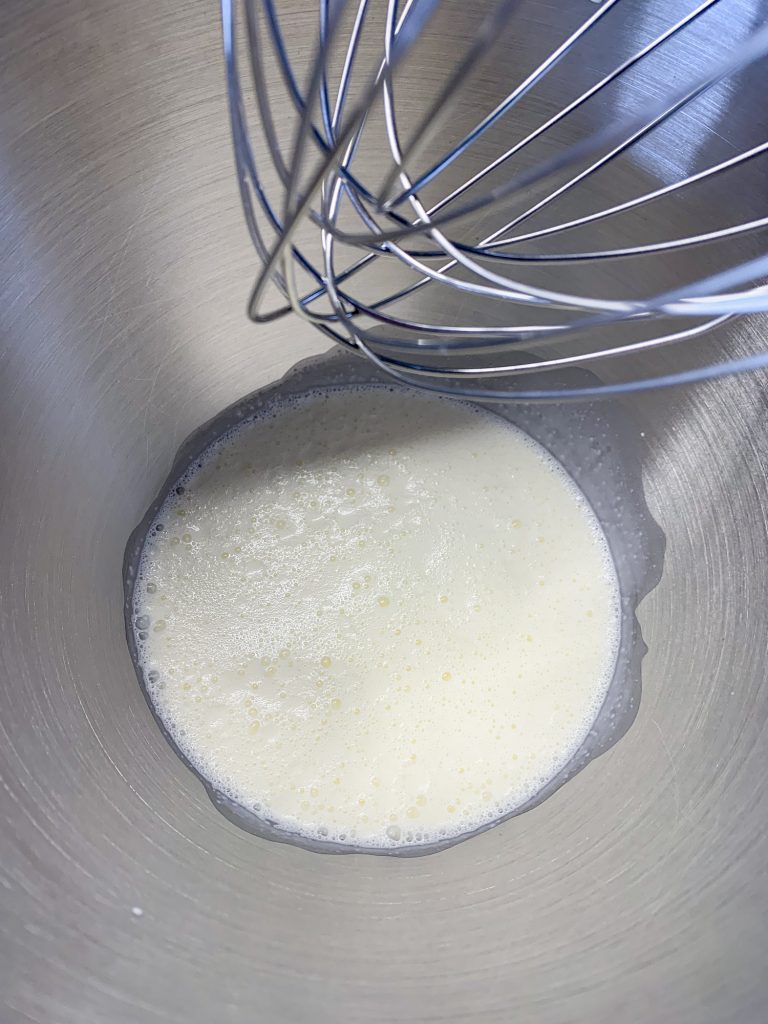

Spread the whipped cream on top of the pavlova and garnish with the prepared fruit. Serve immediately.
Storage: you can keep the fully cooled and ungarnished pavlova covered at room temperature for up to 2 days. As soon as you garnish pavlova, you should enjoy it immediately, then it tastes best. Freezing is not recommended.
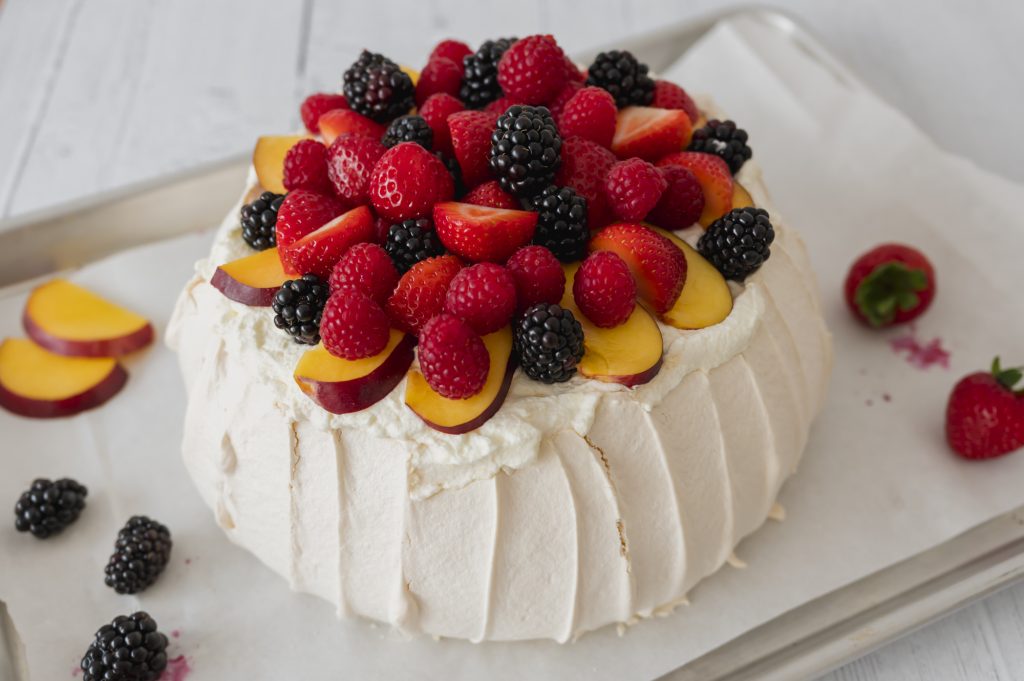
My Summary for Pavlova
Difficulty: intermediate.
Taste: pavlova has an intense sweet taste. The cream and fruit neutralize the sweetness a little, but all in all it is very sweet.
Texture: the edges of the pavlova are crispy, while the inside has a soft marshmallow texture.
PROS: if you like sweet desserts and especially marshmallows, you will love pavlova!
CONS: when you make pavlova for the first time, it can be challenging, but don’t let that intimidate you. Take your time and pay attention to the consistency of the meringue, then it won’t be a problem.




